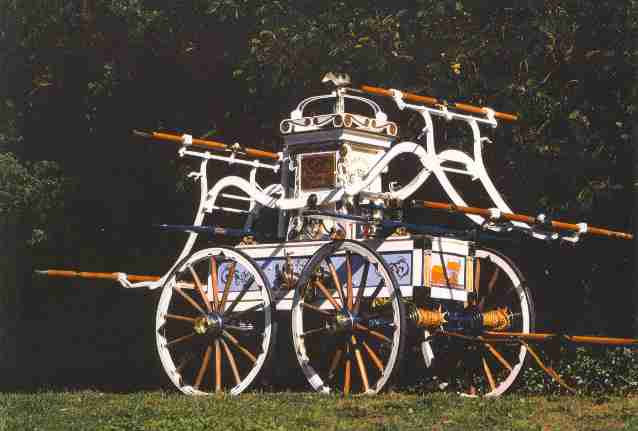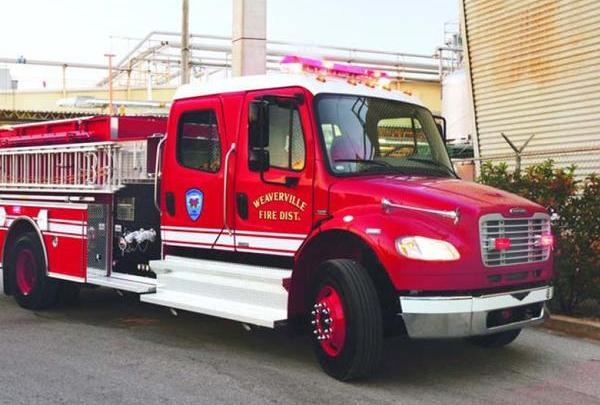

District and Department
Since 1898 - ARCHIVED WEBSITE


Since 1898 - ARCHIVED WEBSITE

The wet winter and spring this year brought a bumper crop of weeds. To reduce fire hazard, State law requires reduction of weeds around structures.
Weaverville Fire District’s Hazard Reduction Program provides weed abatement work, at little or no cost, to elderly, disabled, and low-income persons in the Weaverville, Lewiston, Douglas City, and Junction City areas. Token payment for the service is encouraged, but is completely optional. (Money received is recycled back into the program, so more can benefit.)

Now’s the Time for ‘Defensible Space’ - 2/1/11
It may still be winter, but the good weather provides an excellent opportunity to reduce summer fire hazard.
California State law requires 100 feet of ‘Defensible Space’ around homes. Adequate clearance of vegetation protects structures in the event of wildland fire, and makes a safer work environment for the firefighters defending them.
“Once Fire Season comes, it’s getting to be too late to do hazard reduction,” says Scott Alvord, Interim Chief of the Weaverville Fire Department. “It’s tough to work in the heat, burn permits are suspended, and using power equipment like a chainsaw or weed-eater can actually spark a fire. So right now can be the best time to remove that brush, and trim the lower branches of trees.”
Creating Defensible Space is often difficult for Seniors, but thanks to grant funding, Weaverville Fire District provides hazard reduction work at little or no cost.
Under the program, upon request of a property owner, crews will remove accumulated forest litter, brush, and other hazard vegetation around structures. Priority will be given to elderly, handicapped, or low-income residents, in the Weaverville, Lewiston, Douglas City, and Junction City areas. Participation is strictly voluntary. Token payment for the service is encouraged, but is completely optional. (Money received is recycled back into the program, so more can benefit.)
The hazard reduction work is performed by local professional wildland firefighters employed by the Weaverville field office of Firestorm Wildland Fire Suppression, Inc.
‘Defensible Space’ Help Available to Seniors - 11/1/10 photos
Homeowners again have the opportunity for low-cost abatement of wildfire dangers, under a Weaverville Fire District program continued from last spring.
California State law requires 100 feet of Defensible Space around homes. Richard Smith, Chief of the Weaverville Fire Department, explains: “Adequate clearance is vital for protection of property in a wildland fire. With Defensible Space, we make our communities safer, and provide a safer work environment for firefighters defending these homes.”
Under the program, upon request of a property owner, crews will remove accumulated forest litter, brush, and other hazard vegetation around structures. Priority will be given to elderly, handicapped, or low-income residents, in the Weaverville, Lewiston, Douglas City, and Junction City areas. Participation is strictly voluntary. Token payment for the service is encouraged, but is completely optional. (Money received is recycled back into the program, so more can benefit.)
The hazard reduction work is performed by local professional wildland firefighters employed by the Weaverville field office of Firestorm Wildland Fire Suppression, Inc.
‘Defensible Space’ Help Available to Seniors - 3/31/10 photos
Homeowners again have the opportunity for low-cost abatement of wildfire dangers, under a Weaverville Fire District program continued from last year.
Scott Alvord, Interim Chief of the Weaverville Fire Department, announced Phase 2 of the Hazard Reduction Program, funded by Title III of the Federal Secure Rural Schools and Community Self-Determination Act.
California State law requires 100 feet of “Defensible Space” around homes. “Adequate fuels clearance is vital for protection of property during an urban interface fire,” explained Chief Alvord. “By improving Defensible Space we make our communities safer, and provide a safer work environment for the firefighters defending these homes.”
Under the program, upon request of a property owner, crews will remove accumulated forest litter, brush, and other hazard vegetation around structures. Priority will be given to elderly, handicapped, or low-income residents, in the Weaverville, Lewiston, Douglas City, and Junction City areas. Participation is strictly voluntary.
Work is performed by a crew of professional wildland firefighters from the Weaverville Field Office of Firestorm Wildland Fire Suppression, Inc.
Hazard Reduction Program Starts Again - 1/15/10
We have secured new funding, and are re-starting the Hazard Reduction Program. In 2009, we limited clearance to approximately 30 feet, but this year we’ll be clearing out to 100 feet. We won’t do weeds until spring, but now in winter is a good time to take out small trees, brush, and lower limbs, and slash disposal by burning is possible.
You’ll recall that the program is voluntary; that it’s intended mainly for the elderly, handicapped, and low-income; and that although you will be “billed” after the work is done, the amount you actually pay is entirely your decision. The main goal of the program is to reduce fire hazard in the area.
If you would like me to meet with you on your site to discuss work we might do there, contact me by phone, mail, or email. (And please spread the word.)
Thanks!
Mike McMillan, Program Coordinator
Weaverville Fire District
Box 447, Weaverville CA 96093
(530) 623-6156

Fire Hazard Work: First Phase Complete - 10/13/09 photos
The first round of the Weaverville area’s ‘Hazard Reduction Program’ is complete, but more work is planned.
The joint effort by Weaverville Fire District and Firestorm Wildland Fire Suppression seeks to reduce flammable vegetation around homes and structures in the Weaverville-Lewiston-Douglas City area. Thinning fuel helps protect from wildfire, and provides relatively safe areas for fire fighters.
A total of 73 requests for aid were received. Work was done at 56 sites. Typically, a program beneficiary was an elderly individual on fixed income, who was not physically and not financially able to reduce a significant fire danger on property they owned and lived on.
Persons benefiting contributed what they could towards program expenses. Comments were overwhelmingly favorable: “We are thrilled to have this work done and a big concern lifted.” “I am 79 years old and cannot do very much. Keep the program going.” “I believe the property and neighborhood is a safer place.”
In Phase 1, work crew wages were paid by American Recovery and Reinvestment Act funds administered by the Weaverville SMART office. 11 individuals received valuable training and work experience. That program has now run its course, and the Fire District is seeking new funding sources.
Scott Alvord, Interim Weaverville Fire Chief, has applied for funding under Title III of the Federal Secure Rural Schools and Community Self-Determination Act. “If the Board of Supervisors act favorably, the crew can be back to work this winter,” Alvord said.
Article: 'Stimulus Funding Benefits Trinity Workers & Homeowners'.
Article: 'Fire Safe Efforts Continue'.

Weaverville to Reduce Fire Hazards – 6/10/09
Weaverville-area residents will have the opportunity for low-cost abatement of wildfire dangers, under a new program that will also see youth trained in firefighting.
Scott Alvord, Interim Chief of the Weaverville Fire Department, announced the Hazard Reduction Program, funded by Federal Stimulus grants administered by the Weaverville SMART Center.
California State law requires 100 feet of “Defensible Space” around homes. “Adequate fuels clearance is vital for protection of property during an urban interface fire,” explained Chief Alvord. “By improving Defensible Space we make our communities safer, and provide a safer work environment for the firefighters defending these homes.”
Under the program, upon request of a property owner, crews will remove weeds, accumulated leaf and needle litter, brush, and other hazard vegetation around structures. Priority will be given to elderly, handicapped, or low-income residents, in the Weaverville, Douglas City, and Lewiston areas. Participation is strictly voluntary.
Actual work will be performed by the Weaverville Field Office of Firestorm Wildland Fire Suppression, Inc. “Weaverville Fire Protection District does not have the financial ability to support this program alone,” according to Chief Alvord. “Firestorm has been active in the county for many years. They came forward and offered to assist, as a service to the community.”
More crew members are needed. Under terms of the grant, crew must be 18 to 24 years old. Applicants are encouraged to contact the SMART Business Resource Center, 40B Glen Road, Weaverville, 623-5538.